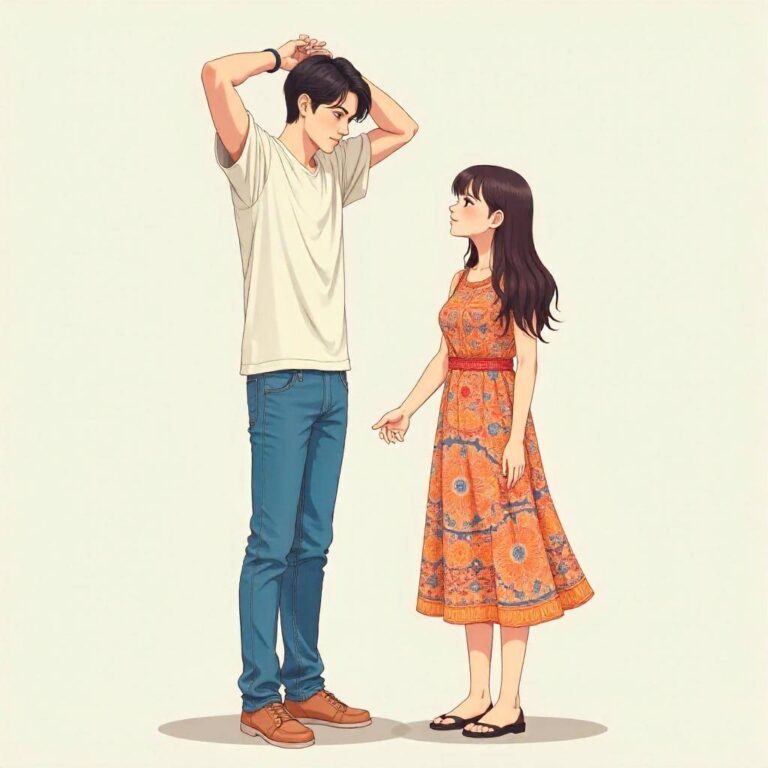Reader’s Question:
Why does Masuo continue to live with the Isono family even after marrying Sazae?
Why Masuo Continues to Live with the Isono Family: A Look into the Heart of “Sazae-san”
As a psychology major and an avid fan of Japanese culture, I often find myself diving into the intricate world
of anime and its characters. One such character that has caught my attention is Masuo, the husband of Sazae in the beloved anime “Sazae-san.” Recently, a reader asked a compelling question: why does Masuo continue to live with the Isono family even after marrying Sazae? At first glance, this may seem like a straightforward question, but as I delved into the context, I realized it’s layered with cultural nuances and family dynamics that are fascinating to unpack.
The Context of Masuo and Sazae’s Living Situation
To understand why Masuo continues to reside with the Isono family post-marriage, we need to take a trip back to the show’s setting. Masuo and Sazae initially rented a house for themselves, which sounds like the quintessential dream for newlyweds, right? However, life threw them a curveball when they faced some unexpected troubles with their landlord. Imagine the stress of trying to establish your own space as a couple, only to be kicked out! I can relate to that, in a way. I remember when I first moved out for college. There’s this excitement mixed with anxiety—like, will I be able to handle living on my own? If I had faced issues with my landlord, I would have been devastated! Masuo and Sazae, however, tackled their challenges head-on, but in the end, they were left with no choice but to return to Sazae’s family home.
The Importance of Family in Japanese Culture
This brings us to the heart of the matter: the concept of family in Japan. In many ways, traditional Japanese culture emphasizes the importance of familial ties and living together. It’s common for newlyweds to live with one set of parents, particularly in situations where financial stability is uncertain. By moving back in with the Isono family, Masuo and Sazae not only received emotional support but also financial help. I remember talking to a classmate who hails from a Japanese background. She shared stories of how her cousins lived with their grandparents even after getting married. It’s a communal approach that ensures that family members are there for one another during tough times. So, in the grand scheme of things, Masuo living with the Isono family reflects a realistic portrayal of societal norms and responsibilities.
Masuo’s Role as a Husband and Son-in-Law
Now, let’s not forget about the dynamics at play here. Masuo isn’t just a husband; he’s also a son-in-law. In the show, there’s an undercurrent of tension and humor surrounding his relationship with Sazae’s father, Namihei. I can’t help but chuckle when I think of their interactions. It’s a classic example of the “son-in-law vs. father-in-law” trope, and it’s executed brilliantly in the series. While Masuo might not be the traditional “mukōzuke” or groom who marries into the bride’s family, he is still navigating the expectations placed on him in this new role. Imagine getting married and then having to deal with the family’s quirks—it’s a real test of character! I often find myself reflecting on how I would handle similar situations.
Embracing the Chaos
Returning to the Isono household means embracing the chaos that comes with it. There’s something warm and comforting about the lively atmosphere filled with laughter and banter, even if it includes moments of frustration. I can’t help but admire how Masuo manages to find his footing amidst all this. It’s not just about living together; it’s about building relationships and finding a sense of belonging. In many episodes, you see Masuo helping out, whether it’s doing chores or participating in family events. It’s heartening to see him invest time and effort into making the Isono family feel like home, even if it wasn’t the ideal scenario he envisioned when he married Sazae. Honestly, it’s a charming take on the realities of marriage and family life.
Final Thoughts: A Journey of Growth
So, why does Masuo continue to live with the Isono family? The answer is multifaceted. It’s about cultural values, family dynamics, and personal growth. Masuo’s journey is not merely about cohabitation; it’s a reflection of the complexities of life—filled with ups, downs, and everything in between. As I ponder my own life experiences and the relationships I’ve built, I can’t help but draw parallels. The struggles, the laughter, the shared moments—they all contribute to who we are and who we will become. Watching “Sazae-san” and exploring characters like Masuo has been a delightful journey, reminding me that no matter how chaotic life gets, family and love can give us strength. Here’s to embracing the chaos, one episode at a time!



